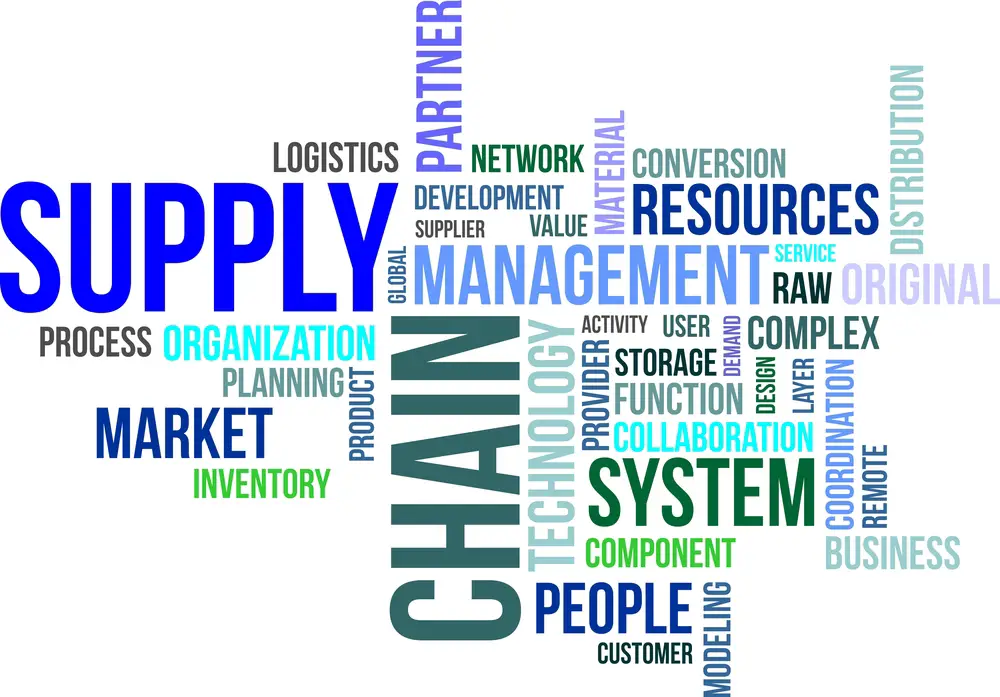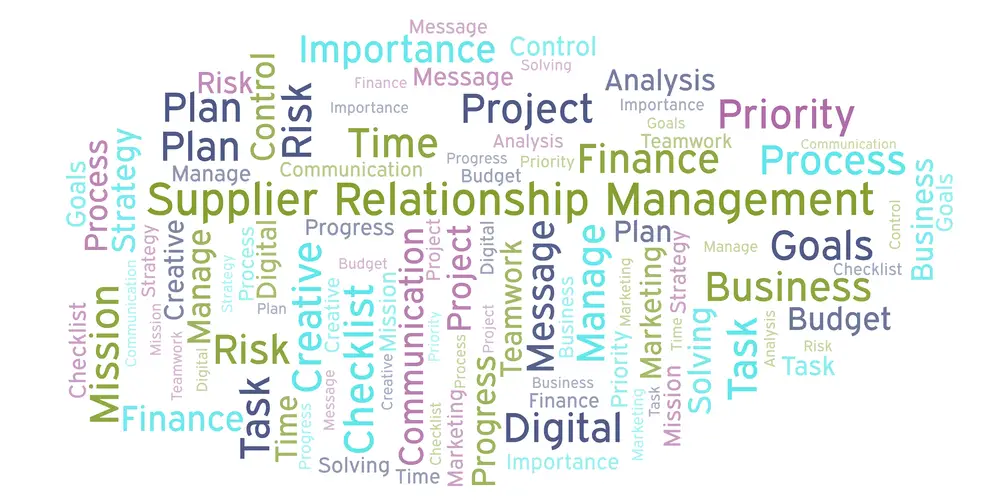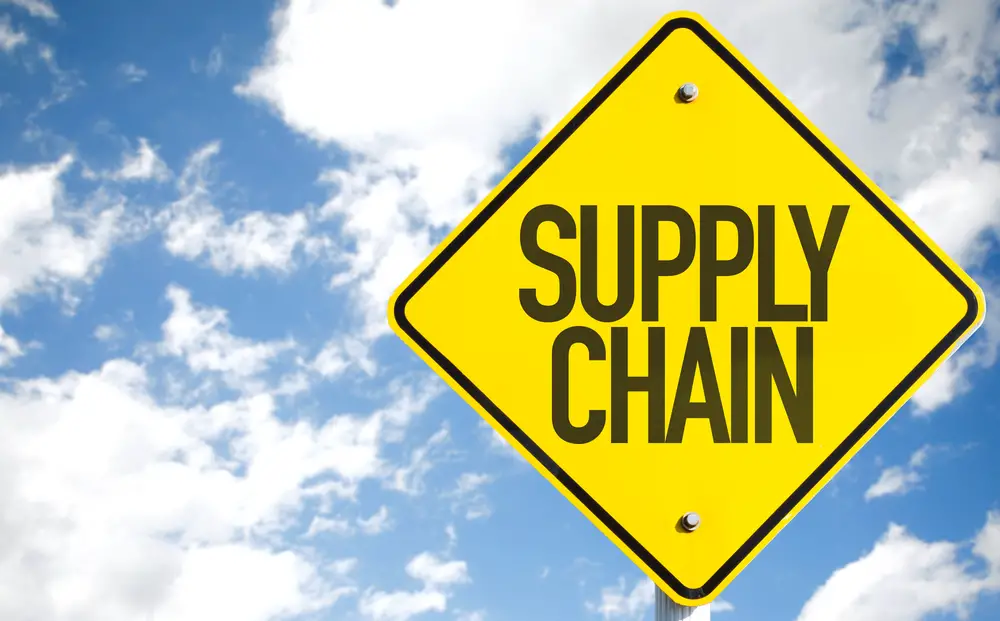Supplier risk and performance management (SRPM) is an integrated system designed to help organizations manage all aspects of their suppliers throughout the entire product lifecycle. This includes activities such as onboarding new suppliers and developing relationships with existing suppliers.
Monitoring supplier performance, tracking supplier payment terms, managing disputes between buyers and sellers, managing contract compliance, ensuring quality control standards are met, evaluating suppliers‘ financial health, and assessing suppliers’ sustainability practices.
It is important to note that SRPM monitors suppliers, helps companies build relationships with them over time, and assists third-party risk management.
A company’s supply chain is integral to its success. Without the right suppliers, it can be difficult for a business to get the resources required for production and development. That’s why businesses need to have a supplier risk and performance management system in place.
This system helps companies ensure that their suppliers are reliable, stable, and efficient so that they can focus on running their own operations without worry. Let’s look at what supplier risk and performance management are and what benefits they provide.
What Is Supplier Risk and Performance Management?
Supplier risk and performance management (SRPM) is a comprehensive approach to managing the risks that are associated with working with third-party suppliers. SRPM helps companies identify potential risk areas for their suppliers, such as financial instability, lack of quality controls, or non-compliance with laws or regulations.
Furthermore, it provides a framework for monitoring supplier performance over time so that problems can be identified early on before they become too costly or damaging and increase supply risk.
The Benefits of SRPM
Implementing an effective SRPM program has numerous benefits for businesses, including improved visibility into supplier operations, increased cost savings, better compliance with regulatory requirements, and reduced supply chain disruptions due to unexpected changes in supplier operations.
Improved customer service levels due to more efficient delivery times and enhanced data security due to improved oversight of sensitive information. Additionally, they can ensure that they comply with relevant industry regulations while also ensuring that they remain competitive by working with reliable suppliers who offer quality goods at competitive prices.
There are many advantages to implementing SRPM within an organization. For starters, it helps businesses identify potential risks associated with certain suppliers before they become issues. This can help mitigate losses from unexpected events such as natural disasters or changes in market conditions.
Additionally, SRPM allows businesses to quickly adapt to any changes in the external environment by providing visibility into current supplier performance metrics such as cost-effectiveness or service levels.
Finally, SRPM can help companies identify high-performing partners, which can then be used for future projects or initiatives this ensures compliance supplier risk.
How Companies Can Utilize SRPM
Companies should start by evaluating their current supply chain situation to identify any high-risk areas. This includes analyzing existing contracts for any potential loopholes or other risks that could impact the relationship between the company and its suppliers.
Once this has been done, businesses should develop a set of criteria for evaluating potential new suppliers based on factors such as financial stability, quality control measures in place, ability to meet deadlines/delivery times consistently, as well as monitor existing supplier performance over time via regular audits and reviews.
Finally, companies should establish clear policies regarding how disputes between themselves and their suppliers are handled to reduce the likelihood of costly legal battles.
Overview of Supplier Risks and Performance Management
Supplier performance management (SPM) is an economic practice aimed at measuring, analysing and controlling a supplier’s performance. Supplier managers strive to reduce risk and promote continuous improvement. The Company monitors the Supplier Performance.
Each company is exposed to supplier risk – the risk that third-party companies can or may pose problems. Business owners who lack visibility of their suppliers can’t perform a supplier risk assessment if they lack a clear understanding or don’t understand potential risks.
Having a clear plan is essential to a supplier’s risk management, and the plan must contain the risk. Failing this or being underprepared can result in unexpected events and affect the company’s finances, operating, and reputational aspects.
MetricStream provides a solution that helps organizations monitor multiple phases in supplier relationships and monitor their risk and performance. Built on the Metric platform, the software covers the Global Supplier Network and aggregates supplier information for complete transparency and mapping.
The solution allows thorough assessments and audits of suppliers to ensure the availability of reliable providers for products of all categories.

Stay ahead of supplier compliance
To reduce suppliers’ risk, you need to see if suppliers execute their contracts according to regulations and keep their data accurate. Ensuring suppliers comply with all regulatory requirements eliminates potential guesswork or blind spots in a scenario.
If manual processes have disrupted your records management, it becomes easy for suppliers to overlook the compliance status of their products or services. However, using supplier-managed software can improve your whole process significantly.
Simplify document gathering with delegation
Improving supplier compliance requires establishing a thorough process. If a supplier makes document gathering compulsory during onboarding, the supplier must give you their records for your relationship before going further.
Data delegation via dedicated web portals is crucial here instead of hours of searching the company’s suppliers by e-mail. The solution will help you avoid risks and non-conformity and save time later in the process if you cannot locate the correct information.
Centralize compliance documentation
If a supplier does not check their status, it increases the chances your company will be in violation too. Having a clear view of information and a centralized database helps reduce supplier risk.
Centralisation of document information into secure repositories allows you the ability to know what is going on with your supplier. It can reveal expired certificates, updated information and any missing supplier information, so it is possible to take appropriate action to minimise possible damage.
Continually monitor supplier compliance
There’s no simple centralisation of supplier info like the compliance certificate. If a company keeps the documentation together without checking it again, the noncompliance is easily apparent without any notice to anyone.
Failure to monitor supplier risk increases risk and can cause damage and criminal prosecution. Keeping track of your supplier is an essential supplier risk management best practice.
How can I maximize my supplier risk management program?
Despite globalisation, companies are increasingly dependent on supply chains as a result. This dependence increases supplier risk or uncovers valuable value and innovative supplier sources within organizations.
It is necessary to transform the perception of a company’s supplier network to maximize the size and quality of supply. Suppliers are no longer transactionally bound. It is a partner in which management must minimize suppliers’ risks and increase their performance while promoting supplier collaboration across all aspects of the supply chain and throughout their lifecycle.
People and Organization
Implementing an effective risk/performance management software program is essential to many aspects of business success. This value is replaced with churn. These problems can sabotage procurement automation initiatives and programs.
It can be because many individuals are affected by supplier relationships, and many have a close relationship with them. The relationship between suppliers and vendors could be interpreted in terms of profound personality, and in some situations, the parties may be reluctant to disrupt existing procurement processes and suppliers’ relationships.
Metrics to focus on: Key Performance Indicators (KPIs)
These metrics can help assess overall performance in terms of quality and cost efficiency, as well as the level of customer service and innovation provided. Some of the KPIs to focus on include on-time delivery rate; quality of products and services.
Response time for customer inquiries; total costs of goods purchased; the number of suppliers and types of products/services purchased; average lead time; efficiency metrics such as inventory turns, rejections or returns; risk management score; contract compliance percentage and customer satisfaction scores.
The supplier performance area is measured for many different purposes. It’s essential that you pick the most important organizations. The main factors that firms choose to assess are business process performance, customer service quality and operational performance, and overall cost.
Mitigate Third-Party Risk and Address Compliance Requirements Using an Automated Supplier and Risk Management Solution
Centralize supplier information and eliminate unnecessary manual labour through automated supplier onboarding. Ensure supplier data is accurate and updated automatically in case of non-compliant by flagging supplier non-compliance.
It is easy to manage audit and vendor risk and helps to reduce risk through automated processes to meet industry standards.
Simplify supplier management
Improve the process by letting suppliers manage data themselves. Simply invite the supplier to register in our supplier portal. Your suppliers benefit significantly by only having one RFP, and you can have full supplier records throughout your enterprise.
Suppliers and buyers will automatically be notified about the key documents’ expiry date. Global changes create unforeseen opportunities and create risks.
Method of Evaluation
After choosing which company it’s evaluating, the next step must be determining the supplier’s performance. This can be done in many different ways. The level of risk and projected benefit can help companies determine optimum methods and combinations of methods.
Contacts with other supplier customers
Companies should also decide how they will employ these techniques. Several less costly ways to help obtain updated risk assessments. When implemented correctly, it helps companies stay on top of important developments to prevent problems. Oftentimes the most costly procedures, like visits, are not performed regularly.
If a supplier needs a site visit, they should use specialized software to help the company determine their capacity to perform. A review or certification can give an organization a greater understanding of the supplier’s operations or processes.
Objectives for Supplier Risk and Performance Management
The goal is to improve overall performance while reducing potential risks. To achieve this, companies should focus on increasing transparency in their supply chain, minimizing supplier turnover by fostering collaboration and trust between partners, and improving supplier performance monitoring across multiple areas.
Specific objectives to aim for include having a comprehensive risk management plan that covers all suppliers; regularly auditing suppliers; setting clear expectations and performance goals; implementing automated reporting tools to measure progress against KPIs
Developing processes for handling conflicts and incidents that may arise, conducting regular performance reviews with suppliers, and implementing a consistent scoring system for evaluating supplier performance.
Conclusion
In conclusion, having an effective supplier risk and performance management system in place is essential for any business looking to maximize efficiency in its operations—no matter how large or small the organization may be. The ability to quickly assess potential risks associated with certain suppliers.
Identifying high-performing partners offers unprecedented visibility into current supplier data, allowing companies to make informed decisions regarding their supply chain strategy moving forward. With the right tools in place, businesses can use SRPM to proactively manage their supply chain operations while simultaneously reducing costs associated with poor supplier performance metrics.
Have you read?
Supplier performance risk management software
How risk management in supply chains affects
Supply chain risk management example
How to mitigate supplier risks and supplier performance.
Mitigating risk through supplier performance.
Cyber security supply chain risk management plan.

Chris Ekai is a Risk Management expert with over 10 years of experience in the field. He has a Master’s(MSc) degree in Risk Management from University of Portsmouth and is a CPA and Finance professional. He currently works as a Content Manager at Risk Publishing, writing about Enterprise Risk Management, Business Continuity Management and Project Management.


